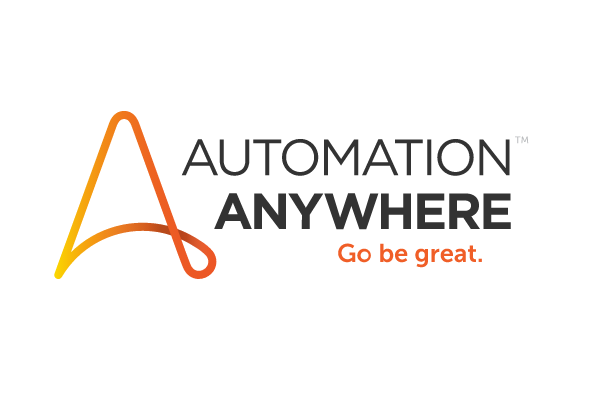Grammarly Stock: Will Grammarly IPO This Year?
This page contains links to our partners. We may be compensated when a link is clicked. Read the disclosures to learn more.

Explore ways to buy Grammarly stock as we approach the IPO date. Access pre-IPO startups like OpenAI, ServiceTitan, and Databricks via the Fundrise Innovation Fund.
Table of Contents
Notable Grammarly News
07/01/2025: Grammarly acquires AI email client Superhuman
12/17/2024: Grammarly acquires productivity startup Coda
02/28/2024: Grammarly Helps Databricks Elevate Customer Trust
02/09/2024: Grammarly lays off 230 employees
Older news…
About Grammarly
Grammarly is a cloud software-as-a-service (SaaS) company that uses A.I. and complex learning algorithms to assist writing. Think Microsoft Word’s spell and grammar checker on steroids.
The service analyzes sentences to determine correct grammar, spelling, clarity, tone, readability, plagiarism, and other factors to help improve writing without a human editor.
Grammarly also provides a generative A.I. writing assistance tool for escaping writer’s block and dozens of integrations with web browsers, websites, and other productivity software.
The company offers a limited free service and a premium subscription service for professionals or anyone looking to improve personal or published content. Your author is a long-time subscriber of the service and highly recommends it.
Grammarly is based in San Francisco, CA, but has founder origins and offices in Kyiv, Ukraine. It has been vocal in its repudiation of the Russian invasion of Ukraine.
This video demonstrates simple examples of how Grammarly improves tone by increasing the confidence and brevity of the text.
Ownership
Grammarly is a venture-backed startup.
The company has raised about $400 million in venture capital funding. It was founded in 2009 but didn’t raise its first funding round until 2017 due to a rare case of early profitability.
The latest round was completed in November 2021, raising $200 million.
Prominent venture capital investors include Baillie Gifford, BlackRock, Breyer Capital, Burst Capital, General Catalyst, IVP, SignalFire, Sozo Ventures, and Spark Capital.
Funding Rounds
| Round | Date | Est. Valuation | Raise Amount | Price |
|---|---|---|---|---|
| Later Stage VC | 11/17/21 | $13.00B | $200.00M | $26.21 |
| Series 2 | 09/25/19 | $2.30B | $90.00M | $4.02 |
| Series 1 | 05/07/17 | $550.00M | $110.00M | $1.07 |
| Source: Caplight |
Valuation
The latest Grammarly valuation is estimated at $13 billion based on the most recent funding round completed in November 2021.
That month marked the peak of the IPO and SPAC euphoria, suggesting the current Grammarly valuation is likely below that number. However, reliable pre-IPO marketplace data is elusive.
Monitor the Hiive marketplace for the latest share availability.
IPO Potential
The Grammarly IPO date has not been established. The company has not yet filed publicly for an IPO, confidentially or publicly.
In a July 2023 interview with BNN Bloomberg, Grammarly Cofounder and Chief of Revenue, Max Lytvyn, said this:
We are ready to go public but we don’t see any immediate need to do so. (An) IPO would be a purely financial decision, for financial opportunities. It wouldn’t change the focus of the company, so we’re not necessarily pursuing it right now.
With a tightly maintained equity stack, the venture capital investors currently engaged will likely have the patience to wait until the broader IPO apprehension subsides.
We’ll get clues about the IPO date when we learn about the hiring of an underwriter, an S-1 filing is submitted, or reporting discloses a Grammarly IPO date range.
How to Buy Grammarly Stock
Most investors cannot own Grammarly stock via direct pre-IPO investing platforms because they require the investor to be accredited.
When the Grammarly IPO date arrives, it will still be difficult for most investors to acquire IPO shares.
The most likely way investors will be able to own Grammarly stock is to wait for the IPO and buy shares after the company goes public. There may be other opportunities to own the stock before the IPO.
Here are some potential options for owning Grammarly stock before, during, and after the IPO.
1. Buy Grammarly stock pre-IPO
Grammarly stock may become available on pre-IPO investing platforms before the IPO. Investors can monitor pre-IPO investing platforms such as Hiive, Forge Global, and EquityZen for share availability.
Share may become available when employees or other early investors want to liquidate a portion of their shares before the public offering.
Investors must be accredited to be eligible to buy pre-IPO shares directly.
It helps to be registered on pre-IPO investing platforms to receive notifications when shares become available.
Investment minimums range from $5,000 to $50,000 on these platforms, but it’s free to sign up for data and deal alerts.
Non-accredited investors can own pre-IPO companies via venture capital funds targeted at ordinary investors. Venture capital funds are a new asset class that emerged in 2022.
The Fundrise Innovation Fund and the ARK Venture Fund (review) are top choices.
The author has yet to see Grammarly stock availability on any of the pre-IPO platforms mentioned above.
Check out our list of top pre-IPO investing platforms to monitor share availability.
Please note: This is a testimonial in partnership with Fundrise. We earn a commission from partner links on AccessIPOs.com. All opinions are my own.
2. Participate in the Grammarly IPO through a broker
IPO investors may find chances to invest during the initial public offering, acquiring shares at the IPO price before the company begins trading.
Formerly exclusive to Wall Street’s best customers, IPO access is now more attainable to retail investors.
Online brokers, including the ones listed below, give customers free access to IPOs, even with low account balances.
TradeStation has a more established track record of accessing more than 300 IPOs and secondary offerings via its partnership with ClickIPO.
But Robinhood has the advantage of Silicon Valley networks and a history of getting allocations for high-profile IPOs (such as Sweetgreen and Rivian).
Check out our list of best brokers for IPO investing to learn more about IPO access for retail investors.
3. Buy after the Grammarly IPO
Though waiting for the IPO requires patience and can be frustrating, there are advantages to waiting for the stock to become publicly traded before owning.
The IPO allows investors to review more established financials after the first quarter of trading. Pre-IPO investing has limited financials available.
IPO stock prices typically rise with high-demand companies, but valuations can become exaggerated. Invest can benefit if you’re in early and sell when the price overheats but suffer if prices revert to fair valuations.
Many IPOs start with high-flying valuations. But often, the stock falls once the first and second-quarter earnings reports become available.
In 2021, both Rivian and Robinhood became high-flying IPO stocks. But six months after the IPO, both stocks were more than 80% below their price peak.
Stock price declines after the IPO can be excellent entry points for long-term disruptors.
Avoid buying overvalued shares immediately after the IPO. Shares often fall after the IPO due to lockup expirations and quarterly earnings disappointments.
However, the most disruptive companies will be higher in a decade. Patience pays.
Frequently Asked Questions (FAQs)
Is Grammarly publicly traded?
No. Grammarly is not publicly traded.
What is the Grammarly stock price?
A public Grammarly stock price doesn’t trade yet. It’s a private company.
Private stock price information is becoming more available and reliable based on pre-IPO marketplace data and other sources.
However, the stock price is only the value of one share. Like public companies, the underlying valuation metrics, revenue, profitability, and market sentiment toward private companies are more significant factors than the share price.
What is the Grammarly stock symbol?
We’ll learn the Grammarly stock symbol once the company files for an IPO via Form S-1 with the SEC. This could be months or years away.
However, we can speculate about what the Grammarly ticker will be.
Here are a few Grammarly stock symbol suggestions that are available in the U.S.:
- GRMY
- GMLY
- GMY
- GY
Can I buy Grammarly Stock on pre-IPO marketplaces?
The author has seen limited evidence of Grammarly stock availability on pre-IPO investing platforms. That doesn’t mean it hasn’t been available in the past or won’t be available in the future.
Having raised capital at a $13 billion Grammarly valuation, early employees or other investors may seek liquidity before the IPO.
Share availability varies among pre-IPO platforms.
Where is the Grammarly IPO S-1 Filing?
A Grammarly S-1 filing has yet to be released to the public, and there is no indication of a confidential filing. The document will become available if the company submits it to the SEC and the regulatory commission approves and releases it to the public.
We’ll post a copy of the S-1 filing on this page when it becomes available.
You can monitor the most recent S-1 IPO filings on this website.
Grammarly News Archive
07/31/2023: Grammarly not yet interested in an IPO
03/09/2023: Introducing GrammarlyGO, New Generative A.I. Product
11/17/2021: Grammarly raises $200M at a $13B valuation
10/10/2019: Grammarly raises $90M at over $1B+ valuation
05/08/2017: Grammarly raises $110 million for a better spell check
Conclusion
Investors get excited when they identify companies riding extraordinary macroeconomic trends. Cloud SaaS companies with recurring annual revenue, like Grammarly, get much attention.
Though you may want to own the company, buying stock early on can often prove difficult for retail investors.
Pre-IPO investing platforms have opened more opportunities for retail buyers. But venture capital investing is still primarily reserved for the ultra-wealthy, requiring millions to invest in seed and early funding rounds for disruptive companies.
So if you decide to pursue IPO shares and early equity in Grammarly, maintain reasonable expectations. If you identify several favorite IPO companies, you may eventually be able to invest in some of your target companies if you monitor pre-IPO marketplaces and open accounts with brokers that offer free IPO access.
If Grammarly stock is on your watch list, good luck. Invest in pre-IPO and IPO companies with caution.
Read more: AI SaaS Startups

Craig Stephens is a former IT professional who left his 19-year consulting career at the IRS to be a full-time finance writer. He started Access IPOs in 2016 to provide a resource for ordinary investors pursuing investment access to IPOs and pre-IPO startups. Craig studied Finance at Michigan State University and lives in Northern Virginia with his wife and three children. Learn more about Craig.
* This is a testimonial in partnership with Fundrise, Hiive, and other affiliate partners. We earn a commission from partner links on AccessIPOs.com. All opinions are my own. If you sign up with one of our partners through certain on this website, Access IPOs will be compensated at no additional cost to the reader. See the full disclosure here. Risk Statement: Investing in IPOs and pre-IPO startups involves significant risk. Do not invest in companies based solely on what is included in this article. Only invest in IPOs and pre-IPO companies with money you can afford to lose. Access IPOs is for informational purposes only. Mentions of specific investments should not be construed as financial advice. Conduct personalized research and consider consulting with an investment advisor before investing.






